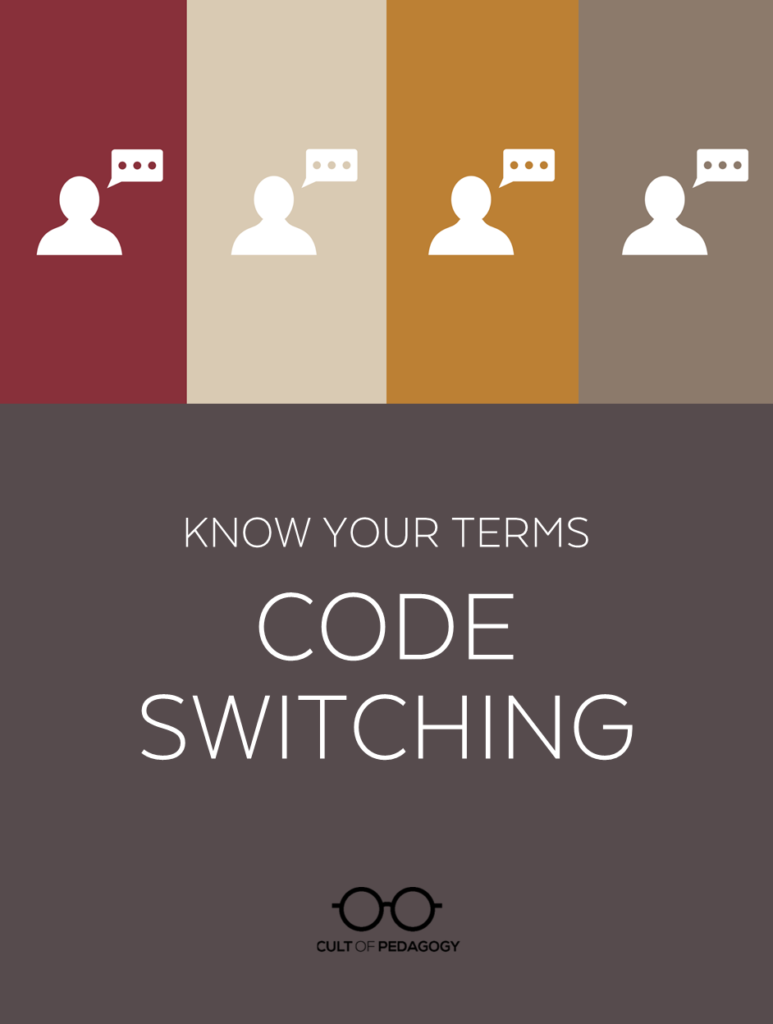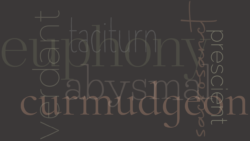
This post was updated in February of 2022. An earlier version contained ideas that no longer reflect the most current thinking on language use in schools.
When you talk to your closest friends, you probably sound a little different than you do when you talk to your boss. You’ve most likely learned that in order to communicate effectively, you need to code switch to fit different audiences.
People who speak two languages often code switch right in the middle of a sentence, popping in a few words from their first language for a variety of reasons: Limited vocabulary in the second language may be one, but more often, the switch happens as a way of signaling membership in a group.
Recognizing this practice can help teachers understand what’s going on when a student suddenly changes their language or dialect in the middle of a task or conversation, or when they sound different depending on whom they’re speaking to.
Among educators, thinking around code switching and language use has evolved over the years. The biggest shift is that in the past, any language that was different from the one preferred in school was viewed as incorrect. School language was considered standard, so when students switched between the two it was treated as a mistake or a transgression, something to be corrected.
That practice has become less common over the years, replaced by one that puts a student’s home language, or the language they use with friends, on an equal playing field with the language taught in school. Second language teachers are now encouraged to not correct code switching, but to instead respond by modeling use of the language of instruction. Teachers whose students use other dialects may be more likely to coach students to code switch as an empowering practice. While these practices are certainly an improvement over what came before them, they still hold one language—the one taught in school—as superior to the others.
More recently, other voices have emerged that are looking at these practices through a more critical, anti-racist lens. Rather than promote code switching or positioning mainstream language as “standard,” this movement seeks full respect of students’ home language—specifically in these examples, Black English—and pushes back against the deficit mindset that one language is better than another:
- April Baker-Bell’s book Linguistic Justice introduces an approach that “intentionally and unapologetically centers the linguistic, cultural, racial, intellectual, and self-confidence needs of Black students.”
- A 2020 statement by the NCTE Conference on College Composition & Communication demands changes that include not teaching students to code switch, and renaming what was once called “standard” English as White Mainstream English.
- In his essay, Black Lives Ain’t Never Gon’ Matter in the Classroom Until Black English Does, Dillin Randolph reflects on his own experience with code switching and offers recommendations for how teachers can “openly challenge the multiple, institutional structures of anti-Black racism that shape language politics.”
Know Your Terms is our effort to build a user-friendly knowledge base of terms every educator should know. New items will be added on an ongoing basis. To suggest a term for this series, send it to us via the contact form.
Join our mailing list and get weekly tips, tools, and inspiration that will make your teaching more effective and fun. You’ll get access to our members-only library of free downloads, including 20 Ways to Cut Your Grading Time in Half, the e-booklet that has helped thousands of teachers save time on grading. Over 50,000 teachers have already joined—come on in.





An excerpt of Queen Latifah in the movie “Bringing Down the House” explaining this would be a great intro for a student lesson!
Thank you for the definition and links. I hope you can put a date on this definition because it differs from the one in current use in the fields of siciolinguistics and second language acquisition: Code-switching ioccurs within an utterance.
Disclaimer: These texts were standard reading in graduate courses taught in 2015 (and thereabouts).
“Sometimes I’ll start a sentence in Spanish Y TERMINO EN ESPAÑOL: toward a typology of code-switching 1” by Shana Poplack discusses different types of code-switching and explores how code-switching demonstrates adept linguistic competence.
http://yorkspace.library.yorku.ca/xmlui/bitstream/handle/10315/2506/CRLC00161.pdf?sequence=1
http://www.sociolinguistics.uottawa.ca/shanapoplack/pubs/allpubs.html
Sal Tagliamonte’s course book and resiurce page:
http://www.wiley.com/WileyCDA/WileyTitle/productCd-1405135905.html
http://individual.utoronto.ca/tagliamonte/links.html
Thank you for the information while this was in my book I like the way you have explained it.
=)
I def need to include each student especially the ones not speaking up.
I’m don’t necessarily agree. Can you please explain to me why in England there are many different ethnic groups hailing from many parts of the world who are taught to speak proper English in their public and private schools without the use of Code Switching?
Hi Henry,
I can’t speak to how English is taught in England, but I imagine if I was a visitor or a new student, I’d probably have to do some code-switching, just because I’m sure my use of language would be different from theirs. In fact, I code-switch all the time – my use of language with my friends is far different than with older adults, kids, or even a boss. It’s not that my language is incorrect, but that it fits the situation and my audience. I’m able to adjust. I think what it comes down to is the section (in the article) that mentions we shouldn’t ignore non-standard English, but rather we should understand the most effective ways to teach appropriate use of language.